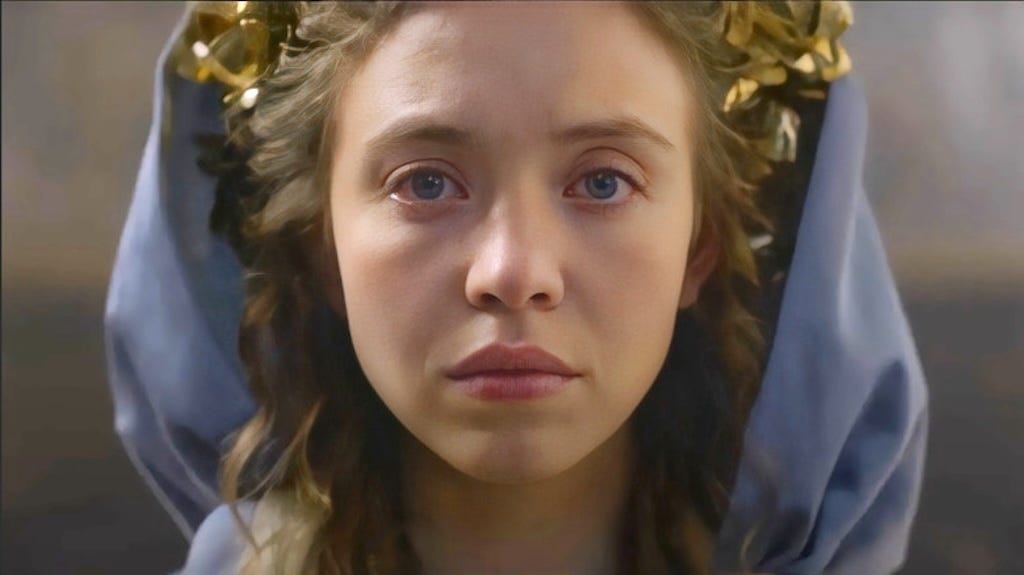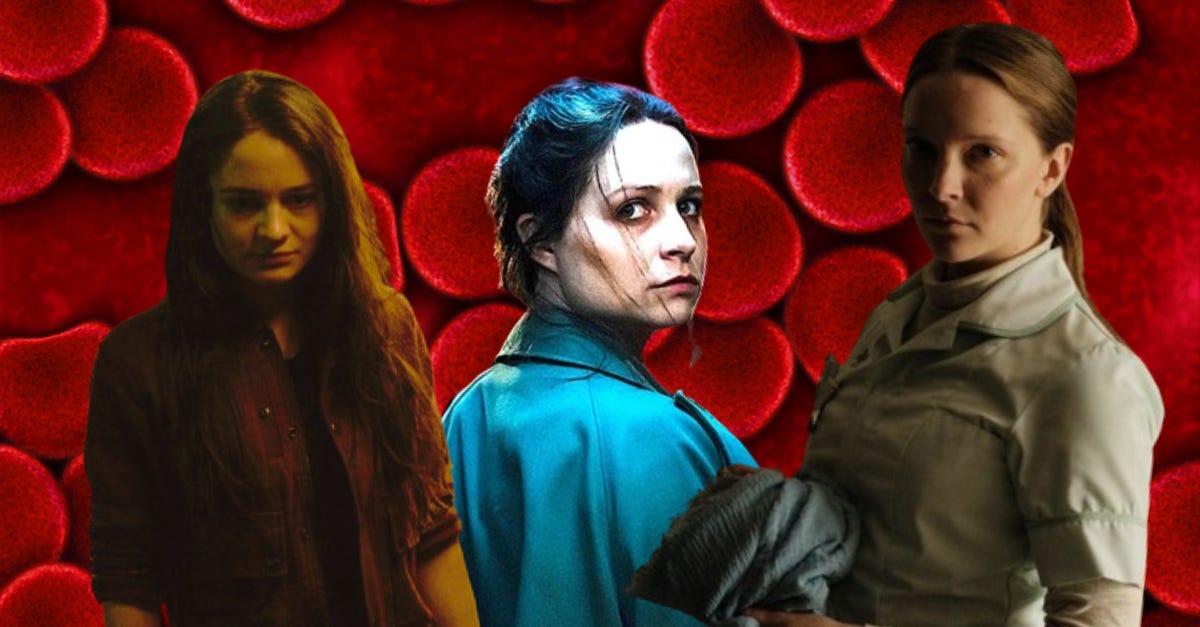I have written about the final girl a lot, as is the fate of any female writer interested in horror. Still, I have yet to develop strong feelings about the trope. In a genre largely obsessed with female pain and suffering, the final girl often feels like a hollow symbol of second-wave toughness. This feels particularly true when slashers became a lot nastier to their victims. Justice for all the dumb sluts massacred in 90s and 2000s horror. You did not die in vain.
But amidst the explosion of “arthouse” and “elevated” horror of the last decade, the final girl feels less and less important. There are still plenty of horror movies with a single surviving woman: it’s just that it’s the girlies that are often perpetrating the brutal violence. To quote a classic final girl flick: the call is coming from inside the house.
Take one of the most influential of the elevated horror crop, Ari Aster’s Midsommar (2019). You might know it better as your brother’s favorite movie. In Midsommar, Dani (Florence Pugh) is a grieving young woman who finds unexpected solace in a Swedish cult that practices human sacrifice. When the cult elects her May Queen and asks her to choose the final sacrifice, Dani picks her flop boyfriend. In the now-iconic final shoot, we see a transformation of the final girl archetype within Dani’s placid expression. The era of the teenage girl crying into a landline while the killer lurks in the corner is over. For a girl to survive in the landscape of elevated horror, she has to be willing to partake in gleeful violence.
Immaculate, the Catholic horror movie in theaters right now that is not First Omen, is a return to the classic final girl. Sydney Sweeney stars as Sister Cecilia, a devout American who joins an Italian convent. Immaculate maintains a tantalizing sense of dread before trading it in for gutsy gruesomeness: tongues are snipped, feet are branded, fingernails are peeled away. In the wake of my search for body euphoria, I’m dulled to the pregnancy as horror metaphor. I get it: women’s bodies are monstrous. Immaculate’s initial interest in the divinity of pregnancy is the one thing about the film that feels original, but it quickly trades in questions of spirituality for sanguineous giallo splatter.
Cecilia is an extreme version of the final girl: she’s not just a virgin, she’s avowedly chaste. She’s not just resourceful, she’s taken a vow of poverty. We are reminded multiple times that she is pretty, sweet, and, most importantly, a survivor. Though she does rack up a kill count, it’s in clear self-defense.
Immaculate’s inertia feels like confirmation that the final girl is circling the drain. Recent final girls feel limp in comparison to their predecessors — no one left The Menu thinking they wanted to see the continued adventures of working-class hero Margot. Same with Barbarian’s documentary filmmaker, Tess. Scream has swapped out their final girls: Neve Campbell’s coolly lachrymose Sidney Prescott was swiftly written out of the sixth film, but is rumored to be back after Melissa Barrera was unjustly fired for expressing support for Palestinians.
Mia Goth’s characters in X and Pearl are outliers to the trend of forgettable final girls, thanks in part to Goth’s double duty as victim, Maxine, and terrorizer, Pearl. Homicidal farm girl Pearl is a little closer to the new dominant female archetype in art horror — the “crazy girl who goes crazier.”
You might have caught Stopmotion last month, a film about a woman whose obsession with her stop-motion film is the first sign of a downward spiral into violent insanity. Stopmotion is thematically reminiscent of Saint Maud, Rose Glass’s first feature (Love Lies Bleeding, 2024), which charts a young woman’s descent into religious fanaticism, or Censor, which follows a prudish female film censor haunted by the disappearance of her sister. All these films feel like the children of Midsommar. Other movies roughly in this category include The Lodge, Smile, Last Night in SoHo, and Lana Del Rey music videos.
It’s not just erratic behavior that makes a crazy girl horror movie a crazy girl horror movie. Take Justine’s antisocial behavior in Raw, which is contextually and thematically justified: she’s never “just insane.” The crazy girl horror movie is closer to a yassified Joker (Folie à Deux in theaters this October!) in how it points to a vague conception of mental illness and trauma for characterization. Unlike previous final girls who want to flee their circumstances, these are women who enjoy the reign of violence and isolation. As outcasts who struggle to traverse normal society, they’re relieved to have finally found a landscape that makes sense to them and that reflects their craven desires. These character arcs rely on an audience that is generally sympathetic, but ultimately apathetic, towards the mentally ill, in a culture that has taken a “we’ve tried nothing and are out of ideas” approach to mental health.
Female villains have always had a role in modern slashers: just ask Friday the 13th (1980). What makes the films starring these crazy girls unique is in their focus on the main character’s fundamental instability, and the accompanying descent into violence. Their purpose is only to be crazy, their arc is only that they go crazier.
But do not weep for the slow disappearance of the final girl, an archetype that could only become notable in a genre and a medium where female survival was inherently outlandish. I doubt the final girl will ever truly go away, not when there’s so much discourse to be made any time a woman appears in a movie. Besides, it’s a horror trope. She can always come back from the dead.









This was an interesting read given that I'm currently working on a Slasher/Final Girl book series. My goal with the series is to reclaim that phrase "final girl" as a source of empowerment instead of letting it rest beside the outdated archetype or tropes that come along with it.
I have gone back and forth in my head a lot on whether or not we NEED another final girl story. There's so much out there already! But then the characters annoy me with their insistence that I write them. So what's a writer to do?
I guess I just have to do my best to honor their strength while making sure not to make them too crazy ;)
✨ no one left The Menu thinking they wanted to see the continued adventures of working-class hero Margot ✨ <3 <3 <3